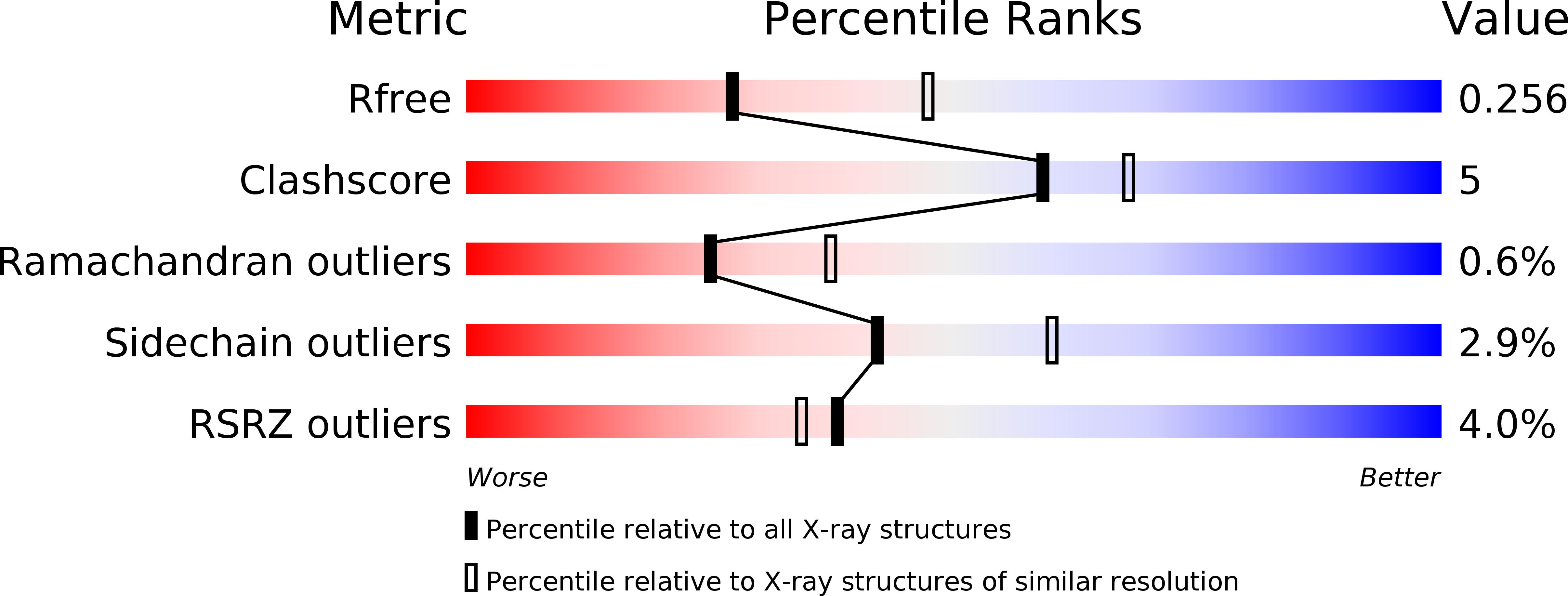Structural basis for precursor protein-directed ribosomal peptide macrocyclization.
Li, K., Condurso, H.L., Li, G., Ding, Y., Bruner, S.D.(2016) Nat Chem Biol 12: 973-979
- PubMed: 27669417
- DOI: https://doi.org/10.1038/nchembio.2200
- Primary Citation of Related Structures:
5IG8, 5IG9 - PubMed Abstract:
Macrocyclization is a common feature of natural product biosynthetic pathways including the diverse family of ribosomal peptides. Microviridins are architecturally complex cyanobacterial ribosomal peptides that target proteases with potent reversible inhibition. The product structure is constructed via three macrocyclizations catalyzed sequentially by two members of the ATP-grasp family, a unique strategy for ribosomal peptide macrocyclization. Here we describe in detail the structural basis for the enzyme-catalyzed macrocyclizations in the microviridin J pathway of Microcystis aeruginosa. The macrocyclases MdnC and MdnB interact with a conserved α-helix of the precursor peptide using a novel precursor-peptide recognition mechanism. The results provide insight into the unique protein-protein interactions that are key to the chemistry, suggest an origin for the natural combinatorial synthesis of microviridin peptides, and provide a framework for future engineering efforts to generate designed compounds.
Organizational Affiliation:
Department of Chemistry, University of Florida, Gainesville, Florida, USA.















